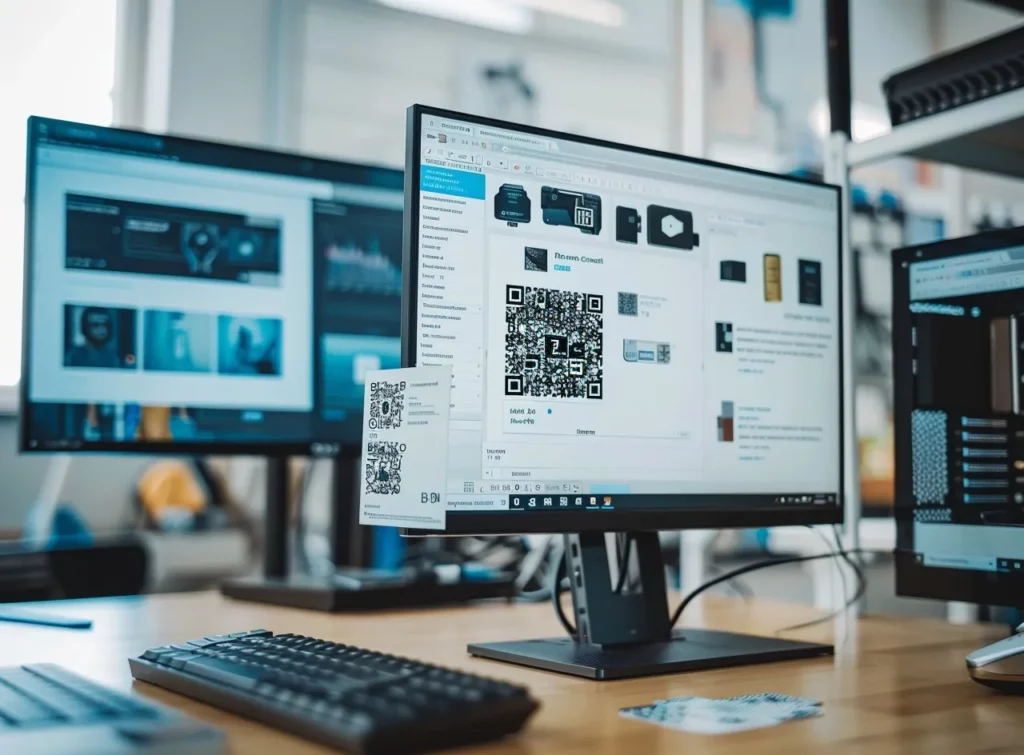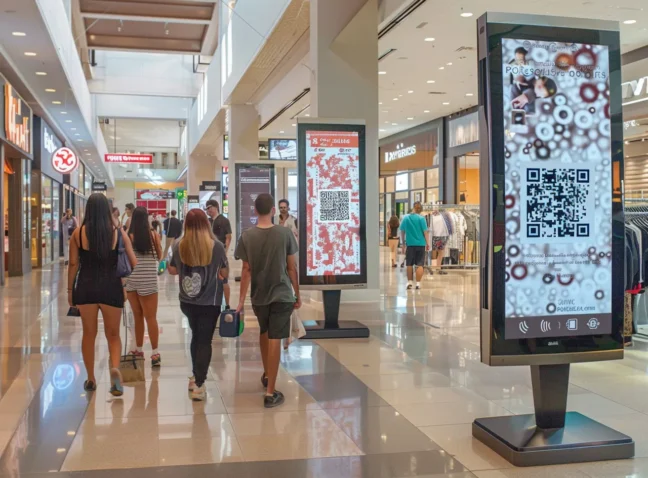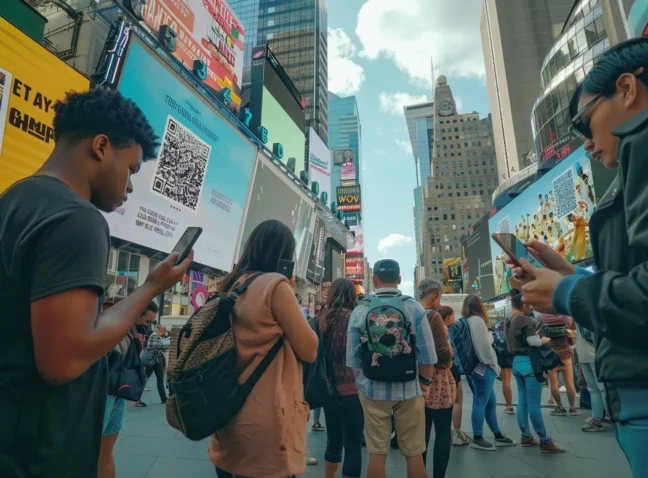QR codes for websites are an exciting opportunity for brands looking to tie both their physical and digital presences into one scannable package. They’re even something individuals can take advantage of, if they’re running a small business website that doesn’t have much of an audience. And QR codes for websites aren’t just for use in the physical world either. They can be implemented in social media profiles, blogs, and more.
If you’re curious about what QR codes for websites can provide your brand or small business, you’re in the right place! MyQRCode are experts of the QR code world, and in this article we’ll be diving into why QR codes for websites are so crucial. Ready? Let’s go!
Why Choose QR Codes for Websites?
QR codes for websites can be an excellent way to get users to your homepages, especially if you’re implementing them on things like flyers, brochures, and advertising banners.
Additionally, they can be utilized on websites themselves to easily move users to payment pages, blog posts, or even loyalty pages. Plus, they’re incredibly cost-effective. While this is true for when you print QR codes for websites out, if you implement them digitally, the only costs involved are in the generation of QR codes, which is usually very cheap or free in cases where you’re only using static QR codes.

QR Codes for Website: Elevating Audience Engagement
QR codes have become indispensable tools for providing excellent user experiences and driving consumer engagement. There’s a good reason for this, as QR codes encourage a user to take additional actions and engage with content in both physical and digital realms more intensely. Considering that 27 million scans have been completed in the first 3 months of 2024 alone, we’d say it’s a strategy that works.
Furthermore, QR code usage witnessed a notable 28% increase across various industries in 2023, indicating its effectiveness in fostering customer interaction. Moreover, 71% of consumers expressed keen interest in using QR codes for accessing product information or making purchases in 2023, emphasizing their potential to enrich the customer journey. QR codes are projected to facilitate a monumental $2.3 trillion in mobile payments globally by 2025, highlighting their pivotal role in shaping the digital commerce landscape. With such compelling data, it’s evident that QR codes are not just a passing trend but an integral component of modern business strategies.
Pros of QR Codes for Websites: Seamless Integration with My QR Code
Incorporating QR codes into web portals offers a direct route to engaging content, which has an impact on user connectivity. This simple addition to your digital presence can lead to notable improvements in interaction and conversion metrics.
- QR codes provide quick access to web content, increasing traffic by 20% (Forbes 2023).
- Web platforms with QR codes see a 30% increase in mobile user interactions (TechCrunch 2022).
- QR codes on web pages facilitate integration with marketing efforts, raising conversion rates by 25% (MarketingProfs 2024).
- Web portals using QR codes experience a 15% boost in online sales due to easy access to product information (Business Insider 2023).
- Implementing QR codes on web platforms results in 40% more social media sharing, enhancing brand visibility (Social Media Examiner 2022).
The Downsides of QR Codes for Business Pages
QR codes aren’t just sunshine and flowers. Businesses need to consider some of the difficulties in their implementation. For instance, there’s a large imbalance in adoption between age groups. Around 52% of users aged 18-34 scan QR codes, compared to just 34% of those aged over 65. That’s a huge difference, highlighting the need for greater education on the benefits of QR codes for senior users.
Additionally, without proper promotion and advertisement, QR codes can be overlooked and scan rates will dwindle. Businesses need to be proactive in promoting their use to their consumers in order to see proper returns.
QR Codes for Website: Overcoming Security and Accessibility Challenges
QR Codes on websites present a unique opportunity to tie both digital and physical worlds despite facing promotion and accessibility hurdles. By addressing these challenges, QR codes can see increases in user engagement and provide valuable insights for businesses:
- Only 22% of smartphone users have ever scanned a QR code, indicating limited consumer engagement with this technology (Forbes 2023).
- QR codes often require users to download a separate scanning app, creating friction and reducing the likelihood of interaction (TechCrunch 2022).
- Malicious actors can easily hijack QR codes, leading to security concerns for both businesses and consumers (CybersecurityInsiders 2023).
- Research suggests that QR code scanning rates decrease significantly with age, limiting their effectiveness in reaching older demographics (Pew Research Center 2023).
- Despite their potential, QR codes often fail to provide a seamless user experience, with 70% of consumers citing difficulties in scanning or accessing content (Marketing Land 2023).
Top Brands Leveraging QR Codes for Websites
QR Codes have become a staple in the marketing toolkits of numerous esteemed brands, seamlessly bridging the gap between physical and digital realms to captivate audiences and drive meaningful interactions.
- Spotify: Spotify has implemented QR codes for websites on their apps and webpages for a long time now. The QR codes take users to profile creation pages, curated playlists, and are often tied to their famous ‘Spotify Wrapped’ implementations they’ve had since 2016.
- Nike: Nike implemented QR codes on their websites which took users to pages showing different colors which could be selected. Once a user had chosen a combination of colors, they would have to wait a couple of minutes before being sent a link taking them to a custom Nike shoe that used the colors they had chosen. This campaign was a huge success, resulting in a 25% increase of digital sales for Nike, showing you what the implementation of a QR code on websites can do.
- Amazon: Another company that has implemented QR codes on its websites for a long time. Amazon uses QR codes on product pages (sometimes placed by product owners themselves), where users can find additional information on specific products.
QR code generator for Website
QR codes for websites present an exciting opportunity for brands and individuals to get more eyes onto their digital content. But some hurdles will need to be surmounted, especially when adoption rates and promotion is considered. However, the benefits certainly outweigh the downsides, especially when pairing physical promotions with digital offerings.
Ready to make your online space more accessible with a simple scan? Check out our QR Code Generator that turns any web page into a gateway for instant access. Perfect for businesses, events, and personal use, it’s time to link up in a snap!





